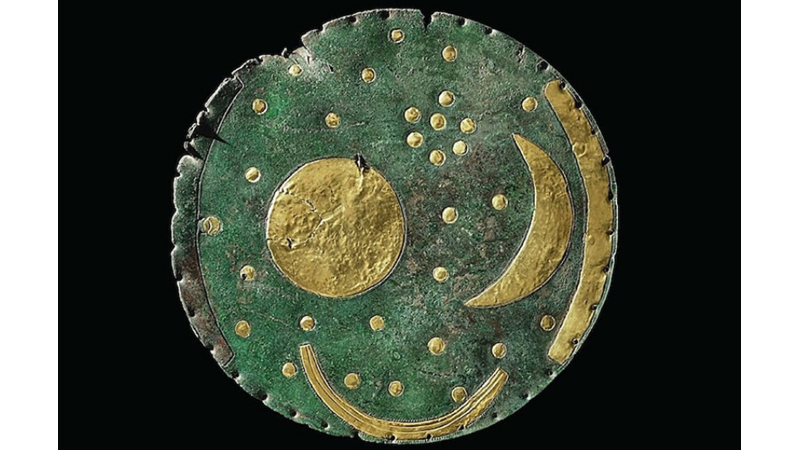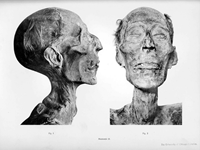More than 3,600 years old, the “Nebra Sky Disk” is considered a unique artifact of international importance and has been on UNESCO's “Memory of the World” list since 2013. Despite being one of the most extensively studied archaeological objects in the world, the production method of the disk is still not fully understood.
Material analysis and previous research had shown that the final shape of the disk could not have been created by a simple casting process alone. New metallographic analysis proves that the Sky Disk was made by a complex hot forging process. The disc required around ten different processing cycles to reach its final dimensions, with each cycle involving heating to 700°C, forging and then annealing to relax the metal's structure.
In 2002, the disk was seized in a police operation and returned to Saxony-Anhalt, and has since been the subject of intensive scientific research. This research has provided important data on the disc's raw materials, production process and original colors. Research has clearly shown that the final form of the disk could not have been achieved by casting alone.
Despite its outwardly simple appearance, the process of forging a bronze disk measuring about 31 centimeters in diameter and only a few millimeters thick was a highly complex process. The latest metallographic studies, published in the journal Scientific Reports, aim to shed light on the casting process of this bronze disk.
In 2002, a small sample taken from the outer edge of the disc for various archaeometallurgical analyses and then replaced, was temporarily removed again and re-examined. During these examinations, colored surfaces were studied with a light microscope for microstructural analysis. Advanced imaging techniques such as energy dispersive X-ray spectroscopy and electron backscatter diffraction, as well as hardness tests, were also performed. These methods provided detailed information about the manufacturing process and structure of the disk.
The experimental tests involved the production of a replica from a casting mold by the experienced coppersmith Herbert Bauer. This process provided an important reference point for understanding the production techniques of the original disk.
Metallographic examination revealed that a complex method of hot forging was used to produce the disk. Approximately ten processing cycles were used to finalize the disk, and each cycle included annealing stages to relax the forging and metal structure.
During the experiment, it was observed that Bauer used more forging cycles to produce the replica than the original. This suggests that the casting raw material of the original disk was slightly larger and thinner than the replica. This difference points to special techniques developed by the old masters to process the material efficiently.
Prof. Dr. Harald Meller, State Archaeologist of Saxony-Anhalt, said: “The fact that such important new information has been obtained 20 years after the discovery of the Sky Disk proves once again that this find is one of the most remarkable artifacts of the century. It also reveals how advanced the art of metalworking was in the Early Bronze Age.”
The research reveals that Bronze Age craftsmen were highly skilled not only in casting techniques, but also in highly complex bronze working methods such as hot forging. Beyond mass-producing axes in large numbers, these artisans were able to create unique artifacts such as the Nebra Sky Disk.
Prof. Dr. Meller also pointed out the importance of constantly updating existing archaeological methods, saying, “The Sky Disk clearly shows how valuable it is to re-analyze familiar finds with the development of new technologies.”
Source: arkeofili.com


 Nielawore
Nielawore









Yorumlar
lovely
Yorum yazmak için lütfen giriş yapınız